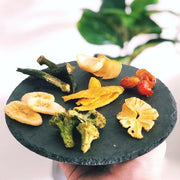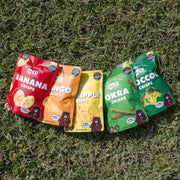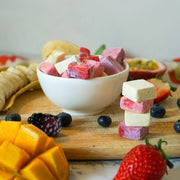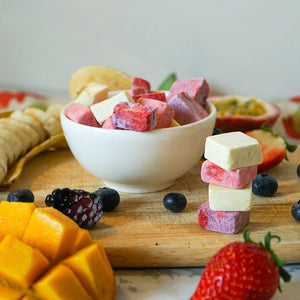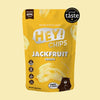How are chips commonly made?
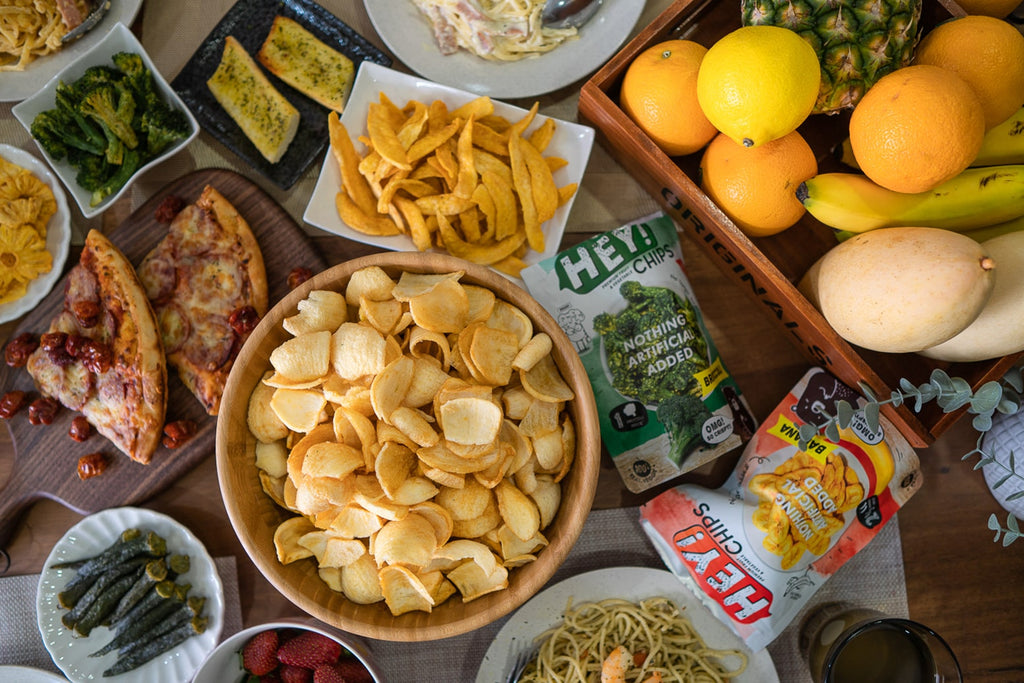
If you pay some attention to the fruit and vegetable chips each time you chance upon one, you will very likely find these five popular technologies of making chips very familiar after a while.
In the earlier article, we were explaining why oil is not as evil as what we were made to believe (Sugar is worse!). It is also important to understand how to cook with oil, and what types of oil to use. When we subject cooking oil to high heat, toxins are released. This is why we are advised to not cook our food for too long and to refrain from eating deep-fried food.

Look at the different types of dehydration!
Among all the different methods in making crispy chips, deep-fried chips is the unhealthiest of all. The high temperatures cause all the nutrients to be lost and oil’s structure to be destroyed.
What about air-frying and baking?
Interestingly, many of us are made to believe that air-frying and baking should be very healthy. However, air-frying only reduces the amount of oil, but still subject the ingredients through high heat, losing original plants’ nutrients.
On the other hand, vacuum-frying gives the incredible taste and nice crunchy texture that we desire of a deep-fried snack, but with reduced oil and oxidation. This preserves the natural nutrients of the ingredients! Comparing the colours of vacuum-fried chips with deep-fried / air-fried / baked chips, you can see the huge difference as the vacuum-fried chips do not brown much.
While VF creates a great balance between taste and health, the healthiest method is freeze-drying. By freezing the moisture out at -40ºC, there is almost 100% retention of the original nutrients. However, it is sadly very expensive and unsustainable because of the enormous amounts of energy needed for the machines to work.
Quality vs Cost
To produce fruit and vegetable crisps, the natural ingredients are usually costly to begin with. That is why many fruit and veggie chips companies made their decisions to compromise in a few areas. There’s usually nothing wrong with it as long as their packaging and advertising messages are honest to consumers. Watch out for these 3 cost-cutting ways you may not know about:
Maltose dunking / coating
Maltose is a type of sugar. Some fruit and veggie chips brands use it to enhance the taste and crunchiness, and to reduce the weightage of natural ingredients. Maltose also acts as a natural preservative so the product is technically “preservative-free”. Vacuum-frying of maltose-coated chips is the most common technique in Chinese produced fruit and veggie crisps. If the chips look a bit too colourful, now you know why!

Chips after coating with maltose. Colour is unusually bright and colourful.
Palm oil
Using palm oil instead of a healthier oil to carry out the vacuum-frying would save a hell lot of cost. This is why international food giants such as Nestle and Cadbury have been using palm oil in their products. However, palm oil is actually extremely unhealthy with its high saturated fat content Sometimes, palm oil is also labelled as “vegetable oil” on your food labels.
The use of palm oil is very bad for the environment! It is the main cause of deforestation (and our annual haze) as thousands of acres of forests are taken away from the Orangutans to make way for palm oil plantations in places like Indonesia. Let’s all stop this by not supporting every food product containing palm oil!

Oil comparison of 2L bottles across RedMart (Note: Palm oil is often disguised as “vegetable oil”)
Adding other ingredients
How many of us actually bother to read the labels behind our crazed truffle-flavoured, mala-flavoured and salted-egg-flavoured chips when we are deeply in love with these tasty snacks?
The use of flour, sugar and chemically-produced additives can result in a much stronger and more addictive sensation. Adding flour to the chips, or mashing up a few fruits to make the chips can bring the cost down because the amount of quality fruits are reduced. Watch out for strong flavoured fruit and veggie chips which are used to mask the inferior ingredients!


